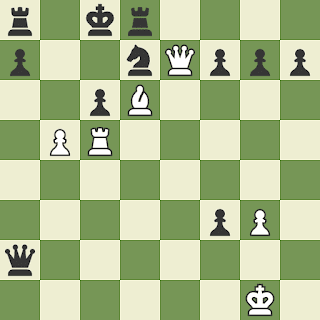Chess.com Daily Puzzle #1: An Easy-Level Mate in Six
I decided to check out the daily puzzle at chess.com because I wanted to write some chess content but had no other inspiration on what I should write about. So I decided to put up the May 2, 2020 daily puzzle from chess.com and just discuss how I went about solving it. Later in the post, I'll also include an embed of the board so that it is possible to simulate the puzzle.
Right off the bat, I was thinking this has to be some sort of forced checkmate involving the rook taking the pawn on c6. Otherwise, White is being mated on g2. Usually, when they create chess puzzles, one of the first things to be consider are forcing moves. If there are no forcing moves, then you have to calculate a bit further to see what kind of advantage you will get at the end. It's not always a tactical advantage. Most of the time, especially for difficult puzzles, the advantage is positional in nature.
Anyway, I started off with Rxc6 which is obvious. There are no other moves that would give White an advantage in this position. Kb7 is the only move. The next move is not that difficult to find either since all other moves are losing. So Rc7+ is also forced and the king moves to b6. From this point, I had a bit of a think because I wasn't sure what was the most forcing continuation. I had to run a few variations in my head. Although, to be honest, when I looked at this the first time, I didn't realize that Black was threatening to mate White if White doesn't give checkmate. I simply thought White had a forced checkmate and looked for it. And I found it.
Next move is a bit tricky but if you were given the clue beforehand that White has a forced checkmate in this position, then it will be a lot easier to find because you will focus all your brain energy to look for that checkmate. However, in actual games, this doesn't happen. You would have to train your perceptive ability to be more aware of the possibility of a forced checkmate in any given position. Of course, in this case, it seemed pretty natural that one would think a checkmate was lurking in the corner somewhere. It's sort of an instinctive feeling you get.
Rb7+ is the correct continuation. Kxb7 and Qe4+ sets up the stage for a mating net. The king will move down again and you check with the queen on c6. The king goes to a5 and Qa6 is checkmate. In another variation, if the king moves to a5 instead of taking the rook, then the next move is Qe1+ and it's mate in two. The queen blocks for the king and after White takes Black's queen, the king moves to a4 and White delivers mate on b4.



Comments
Post a Comment